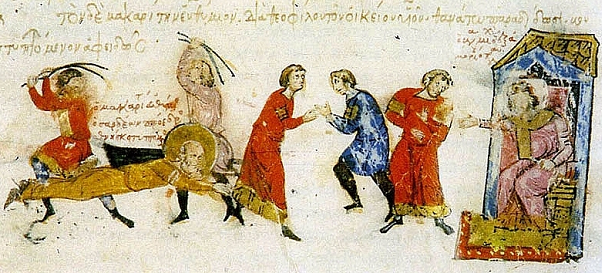[ by Charles Cameron — there’s some question as to the authenticity of the footage of destruction in the Mosul Museum, hence the triple post of which this is part 1 ]
.
First the grief, the terrible wailings:
#Iraq #Mosul #IS (Via @stevoiraq) pic.twitter.com/YLHzsPgKbq
— Ahmed Shames (@AhmedUK_IQ) February 27, 2015
The reason for the grief:
"The Mosul museum is a major museum. It has a remarkable collection of finds that date back to the Neolithic era." http://t.co/PIArDCKNKv
— Democracy Now! (@democracynow) February 27, 2015
I have to say, I too was moved to tears by the video.
The symbolic impact:
— steven nabil (@stevoiraq) February 27, 2015
An individual’s response ties the destruction of statuary in with the destruction of lives:
And one more thing against Cultural terrorism of #ISIS. Je Suis #MosulMuseum #Iraq pic.twitter.com/um7U6komWA
— Joyce Karam (@Joyce_Karam) February 28, 2015
A communal response as reported by the same individual:
Baghdad responds: #Iraq National Museum Re-Opens days after #ISIS thuggery in Mosul's.US invasion 2003 forced closure pic.twitter.com/fWg07rI98p
— Joyce Karam (@Joyce_Karam) February 28, 2015
**
Two useful articles:
Following up on those videos of ISIS smashing Assyrian antiquities in the Mosul Museum, here’s a roundup of commentary and detail from several websites around the preservationist community. And let me emphasize that I am not giving more weight to the destruction of antiquities than to the slaughter of human beings, but that barbarity is already well known.
But another way to think about it is as squarely in a tradition of iconoclasm. Abraham, the patriarch of Judaism, Christianity, and Islam, himself destroyed idols, according to tradition. There’s a strong tradition of icon-destruction in Christianity. And in pre-Islamic Mecca, the Kaaba was the site of multiple idols, which Muhammad cleared out before rededicating the site to God. This is certainly the tradition to which ISIS wishes to claim a connection. The Taliban, another group that claimed fidelity to the principles of early Islam, also spent a great deal of time destroying images of people—most notably the massive Buddhas at Bamiyan in Afghanistan. The tomb of Muhammad in Mecca was itself destroyed by Ibn Saud, the first monarch of Saudi Arabia, early in the 20th century.
The fog of war makes it tough to tell when genuine artifacts are missing or in danger.
In reality, the relationship with icons in all three Abrahamic religions is rather more elaborate than Abu Bakr al-Baghdadi would want us to believe—but the tradition is there. Destroying traces of forebears, and even robbing and destroying tombs, has perhaps a longer tradition in civilization than preservation.ISIS can’t claim total purity on the matter itself, either. The group has widely been reported to be profiting by selling plundered artifacts on the black market.
**
And let’s not forget the Christian tradition of iconoclasm, both Orthodox and Protestant, either:



